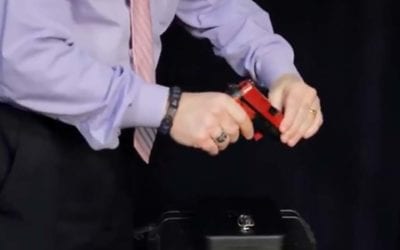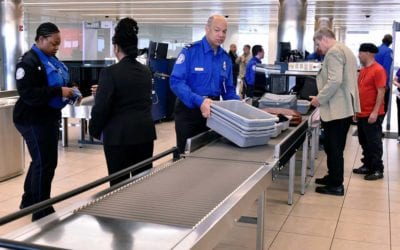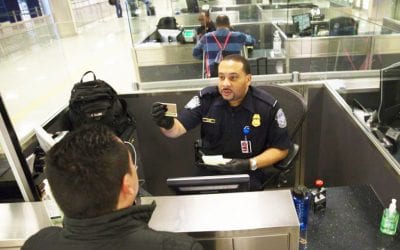In the case of the Transportation Security Administration (TSA), can less be better? Can a less militaristic, intimidating presence at the airport mean better security and a better traveler experience? All without less security?
Several years ago, testifying before the House Transportation and Infrastructure Committee, I noted:
1. Our terrorism watchlist capabilities have improved dramatically. Every American traveler is now screened for every flight. For all intents and purposes, we all should be considered members of PreCheck.
2. All airplane cockpits have been hardened, locked and fortified — even a .44 Magnum shot will not penetrate cockpit doors
3. Passengers, now aware of the possibility of having their plane used as a missile, will not allow terrorists to take over an aircraft.
TSA, the part that the public sees, is set up like the Maginot Line. This World War I defensive system became a poster child about generals fighting the last war. Plus, it consumed such a large budget that other facets of the defense were underfunded. TSA may be in the same situation.
Today, TSA finds itself in a similar position — defending against old threats, in some cases threats that no longer exist. In addition, the focus on passenger screening has reduced funding to secure the vulnerable back ends of U.S. airports. And, much of the funding for the intelligence portion of our security system — that part that no one really sees — is shrouded in more layers of budget secrecy.
If the TSA budget were cut, the Administration would have to focus on what is most important — what really keeps Americans safe while flying. That is all of the intelligence work that goes on before anyone gets to the airport. In fact, if a terrorist ever got to the TSA inspection line, our systems would have had to fail more than a dozen times. The real protection is pre-check. Make no mistake, every traveler goes through pre-check against criminal files and the terrorist database whether they pay a Pre-Check fee or nothing.
The visible part of TSA at the airports is mostly theater. It is there to make passengers feel safer. It is like a sacrament in the Catholic Church. It is an outward sign. But, the TSA outward sign does little. No terrorists have ever been apprehended. No bombs have been confiscated. No real threats have been uncovered by TSA airport screeners.
Even if there was a threat, the futility of searches at the airport is best demonstrated by looking at the problems of drugs and weapons in prisons. Even our best efforts at Federal and State maximum-security prisons fail.
If maximum-security prisons can’t do it, it is folly to expect TSA to effectively interdict weapons and explosives from dedicated, trained terrorists.
The new TSA Administrator, Peter Neffenger, recently spent an hour with some of the travel industry’s top executives, and it is clear he is well aware of the challenges facing his agency and its importance to the American economy and way of life. Unfortunately, his prescription for a better TSA performance at the airport is more money. Travelers United disagrees. We don’t need more money, the country needs smarter spending of the money already allocated.
Here are my suggestions once again. The list, after more than two years, is still a worthy and sensible goal.
#1 — Revise the forbidden items list; focus on explosives
Pocket-knives, box cutters, tools, and so on, are no threat and cannot be used to break into the cockpit.
#2 — Decommission all whole-body scanners and go back to metal detectors for primary screening
Radiation effects are not documented and half of the privacy protection software does not function, according to TSA itself. These machines have not proven to be better than metal detectors. In fact, they are considered by some to be worse — taking more space and slowing security.
#3 — Dress TSA security screeners in non-threatening uniforms — perhaps pastel polo shirts.
They are security assistants, not law enforcement officers. Their job is to check identification and make sure the traveling public is safe, not to force citizens into submission. Get rid of the starched shirts, badges and bling.
#4 — The terrorist watchlist already covers all travelers. All names are checked every time we fly.
The new world of total passenger intelligence screening combined with big data make the current invasive and intrusive TSA searches unnecessary. A metal detector will do.
Unfortunately, the American public has a love/hate relationship with TSA. They love the sense of security that the uniformed phalanx of officers and array of scanners, swabbers and, sometimes, dogs, engenders. But, we hate the intrusive nature of TSA — the prodding, poking, questioning, strip-searching and more.
A budget cut and pastel-colored polo shirts might be exactly what the Administration needs to focus on its customer service work, helping travelers be more secure. TSA with a slashed budget can focus on the important part of its mission and cut back on the supercilious 21st-Century Maginot Line that has been constructed at airports across the county. America’s aviation security will be no worse for the changes and the overt invasion of the public will be curtailed.

Charlie Leocha is the President of Travelers United. He has been working in Washington, DC, for the past 14 years with Congress, the Department of Transportation, and industry stakeholders on travel issues. He was the first consumer representative to the Advisory Committee for Aviation Consumer Protections appointed by the Secretary of Transportation from 2012 through 2018.



